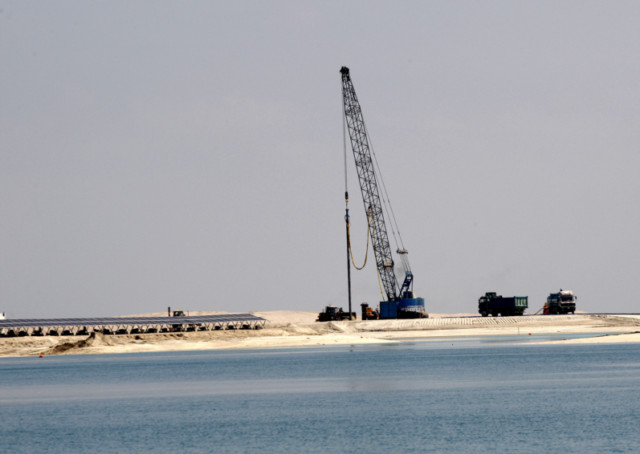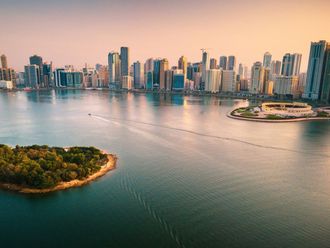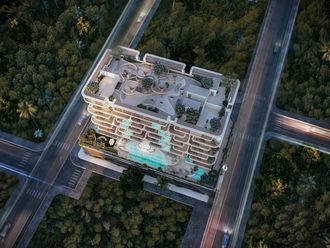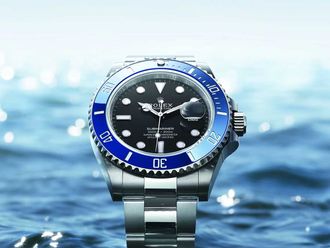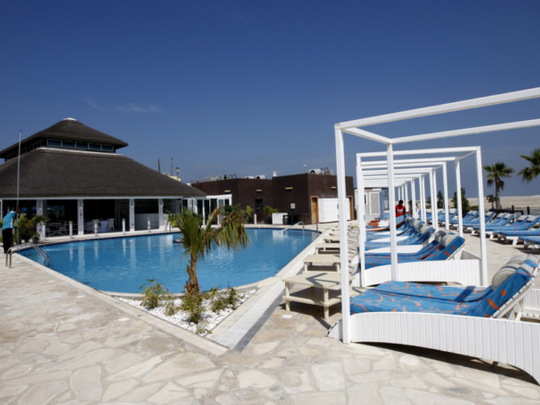
Our small motor yacht pulls away from its narrow wooden jetty outside Nakheel’s Dubai seafront office and we set off for one of the most polarizing symbols and feats of the emirate’s real estate sector to date.
Some see it as the zenith of the 21st century’s architectural imagination. Others see it as one of the projects that broke the UAE’s bank in 2008. Whatever perspective you take, Nakheel’s The World project is ambitious. And when that ambition is realised, the result is stunning.
The developer says the project is complete. All 300 islands, as they float now, are as the project was envisioned in 2003.
Unreserved opulence
Floating through the Panama Canal towards the North Atlantic, there’s not much to see until we arrive at Greenland. The privately owned island is a prime example of what’s here: chic opulence incarnate. Immaculate tall ivory walls interwoven with glass facades. Pristine lawns cut unerringly even to the fractional millimetre. A marble helipad. And a small stretch of beach between palm trees opens up onto the turquoise horizon of the Arabian Gulf. It’s like The Island of Doctor Moreau without the grotesque beasts. If the entire project was populated with islands of this standard, critics would fall quiet quickly.
Nakheel says the 210 islands that went on sale upon the project’s completion have been bought. The other 90 islands are not currently for sale. So it’s surprising to see, as we move through the archipelago, that there is only one island receiving a construction makeover and two completely finished.
From any vantage point, a myriad of unoccupied territories ripe for the taking bespeckle the scene. When the boat docks, only the sound of water hints at life. It’s hard to imagine a larger-than-life community of the super-rich inhabiting this space one day. But then, before the turn of the millennium, it was hard to imagine a sail-shaped hotel built on the bed of the Gulf.
Despite a host of rumoured and guestimated lists being available to peruse online, exact details of owners and transaction fees haven’t been disclosed by the developer.
With Lebanon appearing on Dubizzle in early March for the princely sum of Dh70 million, which, I am told by the estate agent Taktical Realty Group, is “negotiable”, and with the vibro-compaction phase of construction under way on the Kleindienst Group’s Heart of Europe project, speculation about the project’s profitability is picking up again.
High stakes
Josef Kleindienst, CEO of Kleindienst Group, tells GN Prime the Heart of Europe project requires an $850 million (about Dh3.1 billion) capital expenditure, and to date, the company is confident it will meet its budget. He also says the project is already receiving strong interest. “We’ve introduced the project to our group investors and business partners — we’re offering hotel and villa investments — and the response is good.
“Our price on villas is Dh3,300 per square foot and the smallest villa we’re offering is 13,000 square feet.” So that’s roughly Dh42 million in spare change for a small island on the Heart of Europe. The Royal Island Beach Club reportedly acquired Lebanon in late 2012 for Dh35 million from Indian entrepreneur Wakil Ahmed Azmi, who bought the undeveloped 419,000-square-foot island in 2008.
From the Kuwait-based Investment Dar, which reportedly bought Australia and New Zealand for roughly $3.5 billion for its Oqyana project, to MNG Holding’s acquisition of Turkey, all purchased islands are ready for work to begin, I am told. So why is there so little construction?
Kleindienst says the crisis is still lingering in the back of many developers’ minds, with sceptics claiming another real estate bubble could be imminent, but the main reason is down to the feasibility of building on floating island structures. “The rules are different for construction on islands than on mainland projects. If you’re not experienced in building on islands, it will take a lot more time to get used to.”
On the other hand, Mark Brown, General Manager of Royal Island Beach Club, referring to The World developments en bloc, tells GN Prime, “I think everyone is waiting for others to go first and then gauge the success and learn from their mistakes.
“A construction project of this uniqueness obviously requires a considerable amount of investment and the logistics are very challenging, but get them right, as we have done, and they can also be very rewarding. Some of the events and parties that we have hosted have been spectacular and the unique location has been paramount to that.”
The World offers developers all the same opportunities mainland plots do: hotels, apartments, villas — take your pick. And of course, there’s room for the downright extravagant.
A wealth of real estate
Kleindienst plans to link Monaco, Switzerland and St Petersburg to the main island of Europe through a floating bridge; the streets will be lined with snow; it will be one of the only climate-controlled outdoor areas in the world; and then there’s the small matter of five-star luxury hotels, an array of fine dining and nightlife options, the world’s largest outdoor aquarium and a natural saltwater pool housing coral reefs and hundreds of species of underwater wildlife.
Australia, New Zealand and some Pacific islands bought by Dar will reportedly house floating water homes, luxury hotels, spas and a scuba diving centre. Dar’s project is yet to get under way.
As it currently floats, The World, to many, is no more than a scenic detour for helicopter and low-flying aircraft tours across Dubai. But it could be so much more. Pending the outcome of the Kleindienst project and the continued success of Royal Island Beach Club, there is still hope that a sprawling off shore metropolis will emerge in the future.


